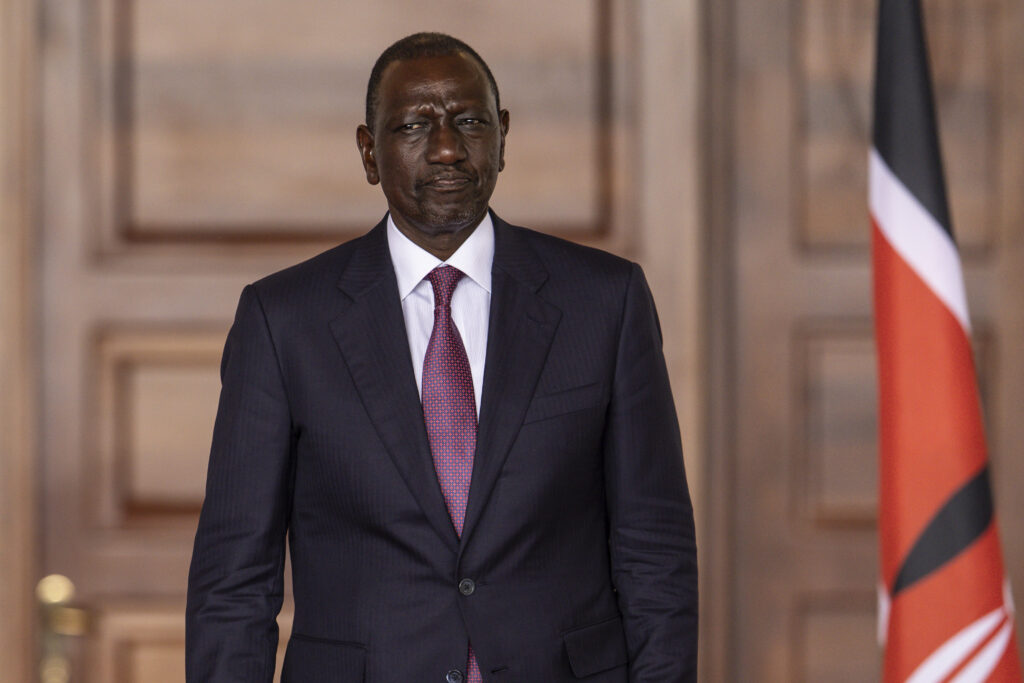When Kenyan President William Ruto took office in 2022, he pledged to end police brutality. Three years on, he has instructed officers to shoot violent protesters “in the leg”.Over the past year, the east African country has been grappling with waves of demonstrations, initially over economic stagnation and corruption but later broadening out to police violence, a long-standing issue in the country of 55 million.The protests have been met with increasingly fierce repression, rights groups say, leaving dozens dead.Kenyan authorities have justified their heavy-handed response by pointing to violence and looting during the demonstrations, while rights groups allege that some of this unrest is the work of paid thugs acting alongside officers to stir mayhem.- A more belligerent tone -In 2023, a year after disbanding a notorious police squad, Ruto said: “I made a promise during my campaign trail that I would stop extrajudicial killings.””No mother, no Kenyan will die under circumstances that the government of Kenya cannot explain,” he added.Such comments seem a long way away now, as the president has struck a more belligerent tone, condemning the rallies and systematically backing police officers.More than 100 people have died since anti-government demonstrations broke out in June of last year, according to rights groups, with 38 dying in the latest rally on July 7.Ruto has alleged those behind the protests are attempting “to overthrow the government” and that any attack on a police officer or station is a “declaration of war”.Two days after the July 7 demonstration, he said violent protesters should be “shot in the leg”.- ‘Losing it’ -Ruto’s comments have been met with shock and anger by parts of the population.”The president is losing it,” wrote Kenyan newspaper The Standard in an editorial, with another frontpage that read: “Kenya sliding into tyranny”. “Whether he’s instructing police to shoot in the leg or wherever… let us just take it for what it is,” said Otsieno Namwaya, a researcher with Human Rights Watch. “It is a shoot-to-kill order,” he added. Karuti Kanyinga, a political researcher at the University of Nairobi, said the government’s heavy-handed response to protests reminded him of the 1990s, when Kenya suffered years of autocratic rule by then-president Daniel arap Moi.Ruto himself has said he is a “student” of the former leader, cutting his political teeth in the youth league of Moi’s party.”We are on a cliff and the possibility of going to a very violent period, like the post-election violence period of 2007, is very high,” said Kanyinga.”I think he’s preparing to move into a tougher, repressive phase in his regime,” he said of Ruto.Cases of abductions — a prominent feature of the Moi era — have risen sharply since the protests began, according to several rights groups, which estimate more than 80 abductions have occurred over the past year, with dozens still missing.Ruto initially said there had been no abductions.He later promised to end disappearances and ensured that all abducted individuals had been “returned to their families”.But some of these families are still searching for their loved ones.- ‘Cannot be held hostage’ -The rhetoric from those around the president has also intensified.”We have told the police that anyone who comes near a police station: shoot them,” interior minister Kipchumba Murkomen told a crowd on June 26.He later claimed the remarks, caught on camera, had been taken out of context.The government’s defence committee chairman was also filmed calling for ‘shoot-to-kill’ during rallies.Also backing Ruto is Christopher Aseka, a lawmaker who over the weekend rejected suggestions that the president had endorsed such orders.”He is simply saying, if you are caught burning a police station or destroying public infrastructure, you will be immobilised,” Aseka told a crowd.Parts of Nairobi’s outskirts saw looting and vandalism during the June and July protests, with the interior ministry saying hundreds of officers were injured.”This country cannot be held hostage by a few rogue individuals,” Aseka added.- ‘Dictatorship 101’ -Pro-democracy protests last week to mark Saba Saba day — the anniversary of the bloody 1990 uprising that demanded a return to multi-party democracy after years of autocratic rule — were met by a heavy police presence and violence.Rights groups reported at least 38 deaths among protesters, while the government says only 17 people died.”Saba Saba was the deadliest single day since the beginning of the demos” a year ago, said Africa Hussein Khalid, head of rights group Vocal.Protests also erupted in June over the death of teacher Albert Ojwang, who died in custody, with people marching in Nairobi against police brutality.The United Nations has condemned the use of force by Kenyan authorities.Contacted by AFP, a government spokesperson pointed to Ruto’s full remarks last week to “understand the context”, without answering further questions.But for many rights defenders, Saba Saba marked a new low.”Ruto defended the police without saying a single word for the victims,” Khalid, from Vocal, said.”The force is used to silence dissent,” he said. “It is dictatorship 101.”
